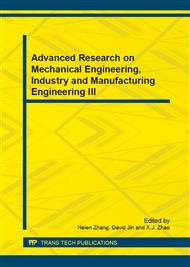p.502
p.507
p.511
p.516
p.521
p.525
p.530
p.534
p.539
Influence of Three-Dimensional Stability Lobes on the Cutter Design
Abstract:
According to the model of three-dimensional stability and the relationship between the parameters of oblique cutting and milling coefficients, this paper analyzes the influence of the cutter geometry parameters (helix angle, normal rake angle) on the three-dimensional stability of the spindle speed, axial and radial depths. On the same cutting condition, it should choose the cutter of having the bigger helix angle and normal rake angle to cut the thin-walled plate, which can increase the stability of cutting process and improving efficiency and quality.
Info:
Periodical:
Pages:
521-524
Citation:
Online since:
August 2013
Authors:
Price:
Сopyright:
© 2013 Trans Tech Publications Ltd. All Rights Reserved
Share:
Citation:


